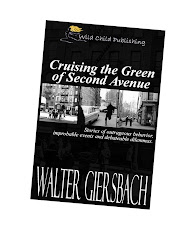Someone facetiously said that when an inveterate collector installs smoke alarms, the first one goes in the place he stores his collection. I understand because I’m a collector without — I hope — being anally compulsive.
 |
| A few glasses from my collection of 300-plus.
I started with matchbooks in the ‘50s, especially those with Petty girl pinups. And coins, stamps, arrowheads, junior pilot wings from airlines, and sugar packets with restaurant names as our family criss-crossed the U.S. Now, more than ever, I relish those ephemera that have disappeared. There were clever plastic styluses a woman used to dial a telephone without breaking a nail. Pocket mirrors with advertising on their celluloid backs. Toogles — the metal hooks with a faux jewel on the end women used to hang their pocketbooks on a table edge. Other things are gone or going fast, like metal lunch boxes and fast food collectible glasses.
Collecting and the search was the basis for a short story I wrote about flea marketing (and love, with a happy ending) published in R.kv.r.y. magazine (at http://www.rkvryquarterly.com/?p=81). My character of Archie Mezinis was “a boardwalk stroller, a country road rambler, a city street seeker. His compulsion lay in taking an hour to walk up and down the lanes between the [flea market] tables. His practiced eye could spot a three-inch Meissen figurine and know it was really Japanese, or a Murano cigarette time worth twice the asking price now that smoking was socially hazardous. He didn’t sell the finds. Instead, they went into a footlocker. A single item in his pocket could validate his whole existence for the next week, reinforcing an existential question as to whether he was truly alive.” Now, that’s collecting!
The value of collecting — and nature of love — were notably present in Cadillac Jack, Larry McMurtry’s haunting story. Jack is a rodeo cowboy turned antiques scout who floats across the landscape of flea markets and auctions. Unlike me and most collectors I know, McMurtry’s Jack was a womanizer and skirt chaser.
Name a friend who doesn’t collect something. At worst, it’s wanting to own one of everything in the world. At best, it’s a desire to hold on to history. Somewhere in between, it’s simply nostalgia. I just don’t know where having over 300 glasses in my attic stands on the spectrum of collecting. But you’re either part of this world — or not. Ain’t no in-between.
|










